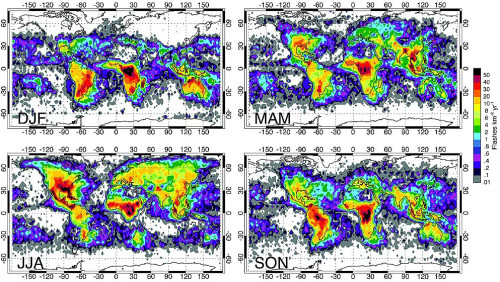NWS Fairbanks - Lightning Strikes W/I 300 Miles Of The North Pole - Yes, This Is Extremely Unusual
Weather-savvy Canadians might already know lightning strikes north of the Arctic Circle aren't unheard of, but the frequency of strikes drops off dramatically as you move north. Saturday evening's bolts were within 550 km of the North Pole -- that's about 2050 km north of the Arctic Circle. A look at the global lightning frequency maps, below, represents this fact well.

?w=680&fm=jpg
The seasonal distribution of lightning activity (annualized in units of fl km−2 yr−1). The contour levels are identical to those of Figure 5. (a) December, January, and February. (b) March, April, and May. (c) June, July, and August. (d) September, October, and November. Image courtesy Journal of Geophysical Research/Christian et.al 2003.
The darker reds and yellows on the maps (which are separated into three-month spans) show where lightning strikes are most frequent, the cooler colours where strikes are less frequent. Near both poles, the grey colour represents regions that average fewer than 0.01 strikes per square km per year. Saturday's strikes were even further north than that.
EDIT
The storms that sparked Saturday's lightning were likely a little different than the ones we see closer to home (or over land at all). While surface heating, as mentioned above, drives storms at lower latitudes, these high-latitude thunderstorms more likely fired up because of instability in the mid-levels of the atmosphere. Even though the surface is still cold, relatively speaking, a warm layer higher up in the atmosphere is enough to fuel storms.
EDIT/END
https://www.theweathernetwork.com/ca/news/article/very-rare-lightning-recorded-near-north-pole
 ?w=680&fm=jpg
?w=680&fm=jpg